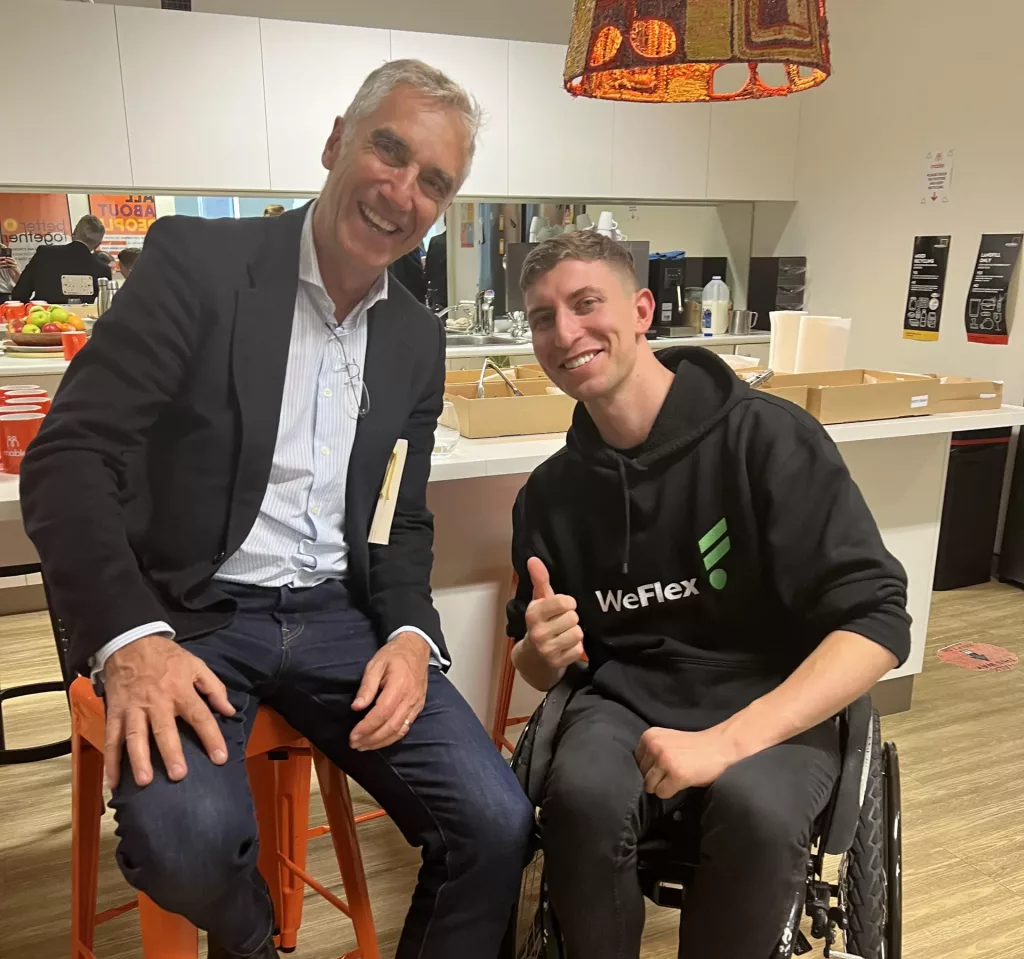Jacob’s story
Jacob, who is a survivor of spinal cord injury, believes in using his experiences to help people in a situation that may be similar to his. “I believe being vulnerable makes the next person feel safe when sharing their story. I’ve always been passionate about thinking outside the box and solving problems. I advocate for accessibility to be incorporated into design stages. If we take accessibility seriously, it should not be an afterthought.”
He adds, “I have a trade background in construction, which has allowed me to think fast, work collaboratively, and know the importance of contributing to society.”
Finding a home
Finding an accessible home to live in was fraught with challenges, Jacob recalls. “While in rehab my social worker told me I had to find a place to move. I wanted to find a place in Parramatta because it was close to the services I needed, close to community therapy and support from friends and family.
“This was a challenging process because I needed to inspect each apartment physically. Finding a place to move into whilst also needing support was very difficult,” he adds.
Jacob mentions getting a private rental subsidy. “The Department of Community and Justice runs the Private Rental Subsidy, which covers a significant amount of rent. The private rental subsidy is to help people with disabilities needing urgent support to get into housing. You can be on a 5 to 7-year waitlist for housing in Parramatta though, and it doesn’t guarantee it will be accessible either,” he says.
Discovering Specialist Disability Accommodation (SDA)
When he was at the Royal North Shore Hospital, Jacob heard about SDA through his mentor. “I was told about the Summer Foundation and their practical knowledge regarding SDA. Although it was good to learn about it, I still felt overwhelmed because I was still recovering and learning to live with a spinal cord injury. I joined a small SDA Facebook group where people talked about their experiences, and I asked questions about places in Parramatta that are SDA. I also asked my support coordinator to research SDA and help me with this process,” he explains.
Jacob is currently living in an SDA apartment while still applying for SDA. Jacob shares, “I had to move out of the apartment I was renting as the owners had to sell. One of my biggest fears is moving out, having no security of where I live and having a disability, so I needed to find a place to live. I was asked by the Physical Disability Council of NSW to talk about my experience renting in an apartment that is not purpose-built, and that led to an interview on ABC radio. ABC was contacted by an SDA service provider who wanted me to reach out to them.”
Jacob has been applying for SDA through the NDIS, but until his application is approved, he is paying the rent through the private rental subsidy. He says, “The SDA process is complicated and lengthy. I got an occupational therapist assessment that had to be redone because it wasn’t clear enough for NDIS. I’m using a company with experience that is helping me through the process correctly. The SDA Provider also recognises this company as they have a good reputation for assisting eligible people in securing SDA funding in their NDIS plan; they were confident they could support me.”
Support in the new home
On how support works in the home for him, Jacob explains he always has one support worker on site so that he has peace of mind that he has continuity of support. This support worker comes through an organisation that has an agreement with the SDA Provider.
Jacob adds that the apartment is purpose-built but traditional units are also available to the private rental market. “There are 10 SDA apartments here, each housing a person who may require different kinds of accessibility.”
“Even though there is a support worker here full-time, each person will usually have a support team to support them outside the apartment. The support hours are split across each person. The SDA Provider has made an initial agreement with a support provider. SDA residents will have the option to vote in or out the provider each year, which gives everyone peace of mind knowing they aren’t locked into one provider.”
Living independently: the lessons learnt
Jacob advises anyone with disability who needs a home that is specially designed and accessible to find out more about SDA and “begin the process as soon as possible”. He says, “I was in the hospital and then in rehab and nobody in my care team mentioned SDA to me. If I had known about SDA, I would’ve done everything possible to move into that sooner.”
Jacob adds, “Where I live now offers all the support and accessibility features I had become accustomed to while living in a rehabilitation centre; it’s fantastic.”
He recommends asking allied health professionals, support coordinators, and social workers about what is out there regarding accommodation. “It shouldn’t be up to the person with the disability alone to find secure, permanent housing.”
